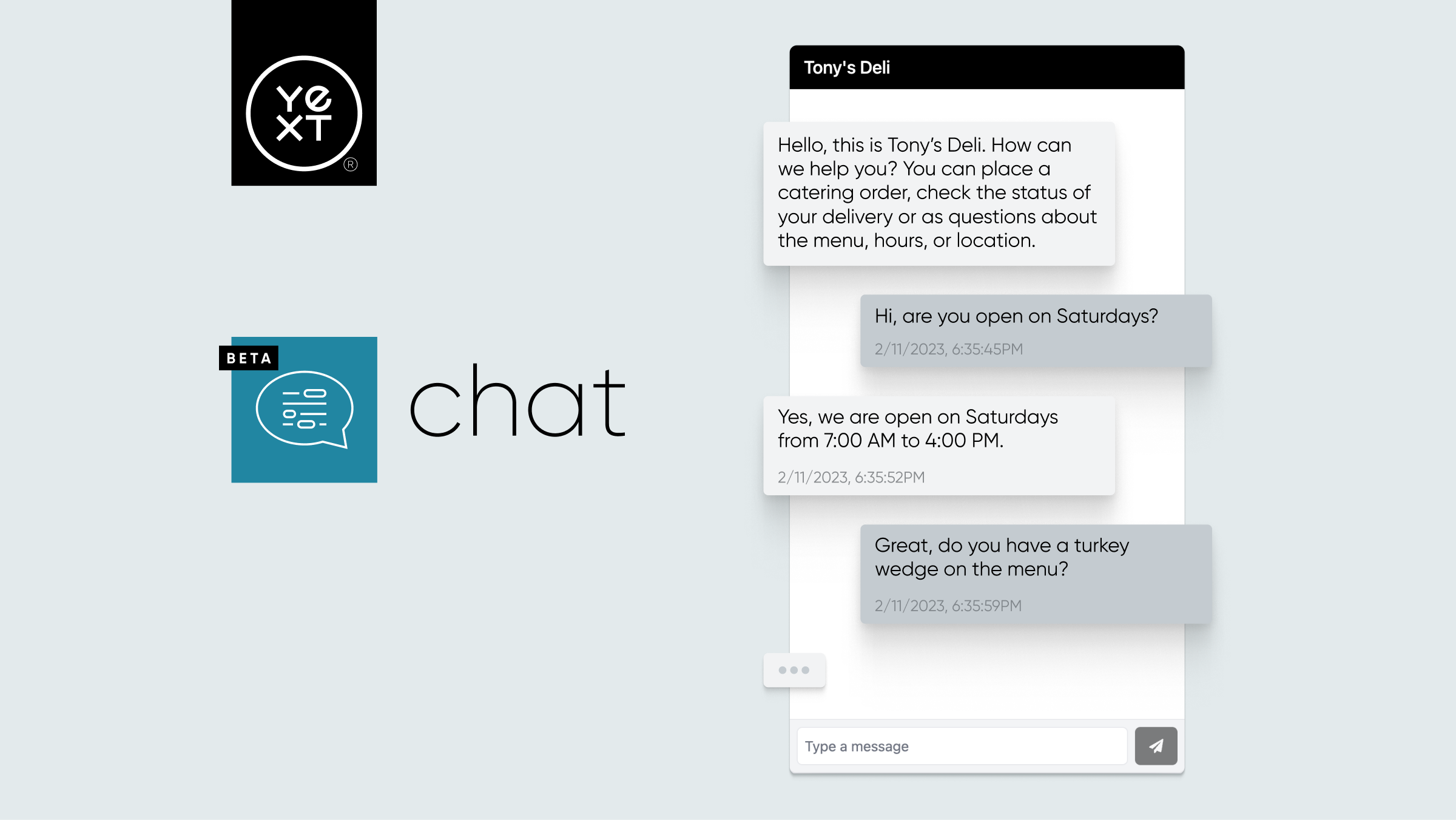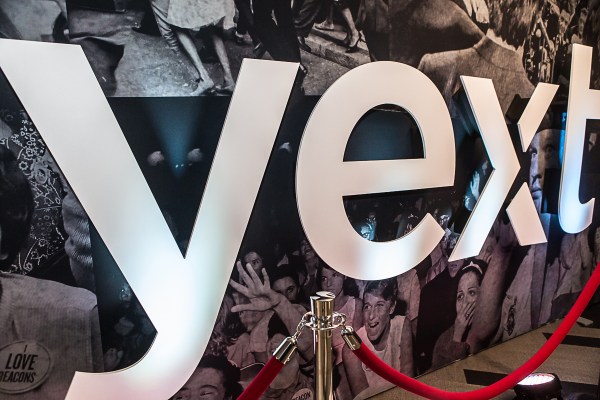Looking to cash in on the generative AI craze, Yext, the platform for online brand management, today announced an AI-powered chatbot called Yext Chat. Taking inspiration from OpenAI’s ChatGPT, Yext Chat is designed for enterprise use cases — and differentiated, Yext claims, by a partly proprietary back end.
“ChatGPT has shown the world that large language models can hold incredibly coherent, helpful conversations — far better than any technology up to this point. But right now there is no easy way for enterprises to harness this technology,” Yext president and chief operating officer Marc Ferrentino told TechCrunch in an email interview. “Yext Chat is designed for the enterprise, and enterprises need full control over what a chatbot says and does.”
To be clear, Yext Chat wasn’t built from scratch. It relies somewhat on OpenAI’s public API, specifically GPT-3.5, to generate text and dialogue. But Yext says that it’s using a mix of text-generating models for different tasks within Yext Chat’s workflow, like marketing, commerce and customer support.
When it launches (it’s not yet generally available), Yext Chat will be able to integrate into existing platforms, including ticketing systems and Slack workspaces. A hospital could use it to power a health system that educates prospective patients on which doctor they should see and get appointments scheduled, for instance. Or a merchant could use it to service retail customers, assisting them with checking on the status of an order or answering questions about a return policy. The list goes on.
This wide swatch of capabilities makes Yext Chat superior to rival enterprise-focused chatbots, like the recently debuted Jasper Chat, which rely on a single model, Ferrentino says.
“Going forward, we will likely use some combination of OpenAI’s models as well as homegrown models trained by our own data science team for specific tasks,” he said. “Our platform is model-agnostic: it can make use of models that we have trained and manage ourselves, or models provided by third parties like OpenAI.”

Image Credits: Yext
Yext Chat’s other ostensible advantage is its ability to tap into the Yext Knowledge Graph, Yext’s in-house database of public facts about brands, including employees, locations, products events, in-store promotions and even parking entrances/exits. Yext Chat only generates responses using a curated set of content that businesses manage in the Knowledge Graph, Ferrentino says — in contrast to chatbots that draw from a web-scale corpus of information, like ChatGPT.
How’s that desirable from a brand perspective? Think about it this way: If you ask ChatGPT a question like “How do I get a quote for car insurance?” it’d give a generic response. But a company using chat on their website wouldn’t want that. Ideally, they’d want a chatbot to deliver an accurate answer in the context of their business — one with links to their products and instructions specific to their company.
“If an answer isn’t in the Knowledge Graph, then the chatbot will simply say, ‘I don’t know.’ This can limit the chatbot in certain aspects but will make it much more suited for enterprise deployments,” Ferrentino added.
Another motivation for the data curation is to prevent Yext Chat from falling prey to misinformation, a fate ChatGPT and other generative text AI systems haven’t managed to avoid. Even the newest iterations of the tech, like Microsoft’s recently launched Bing Chat, can — and do — spout factually wrong, biased info on occasion.
Beyond limiting Yext Chat to data in the Yext Knowledge Graph, Yext claims to have implemented “other safeguards based on the latest AI safety research,” like requiring Yext Chat to explain its reasoning internally and cite its sources. (OpenAI also implements filters at the API level; Yext presumably benefits from these downstream.) In addition, Ferrentino says, Yext uses other AI models to confirm that Text Chat’s responses are factually correct based on the source data.
“Businesses need to have control over the answers that a chatbot is returning — they need to be able to update information in real-time and improve any bad answers. Businesses also usually have a lower risk tolerance than consumers because it’s harder for them to characterize something as in ‘beta,'” Ferrentino said. “Yext’s solution is to combine the large language model with a knowledge graph that can easily be updated in real time.”
No system is perfect, Bing Chat being a prime example. But Yext’s approach — placing constraints on Yext Chat and making it incumbent on businesses to update their information — seems more carefully considered than most. How well will it work in practice? Time will tell — Yext plans to launch Yext Chat “later this year” following a closed beta.
